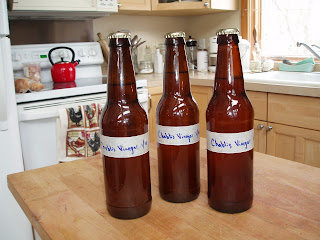
Hey Everyone,
It seems like Spring has almost arrived, so I thought it would be a good chance to post about all of the changes to our little farm here since our last post in the Fall. We're going to try to be better this season about keeping this updated for everyone. As you will see in the photos below, we've been hard at work over the winter transforming some big parts of the backyard. We think it has turned out for the better :)
The pictures that follow take us through the winter starting from the harvesting and storage days of November / December up to the sunny days of last week. Enjoy!
Harvesting the day before Halloween:
Plenty still left in the ground!
The veggies inside were doing fine though:
The chickens were a little confused, but found their favorite perch eventually:
Moving on now to some harvest items...
We have a late winter harvest of Batavian endive, purple radish and some carrots:

A nice heap of collards for freezer storage:
Laying in the carrots for winter storage in sawdust:
These cabbages lasted us all the way to February stored in the cool garage!
And of course, some potatoes and drying beans:
Next we did some landscaping, reshaping the back garden and building a proper staircase out of timbers:
Then we added some bricks to make a nice path:
And most recently have begun the task of building some low fencing out of reclaimed lath and old doors:
Correction! Most recently we have started SEEDS!!!
More to come... Stay Tuned!













































